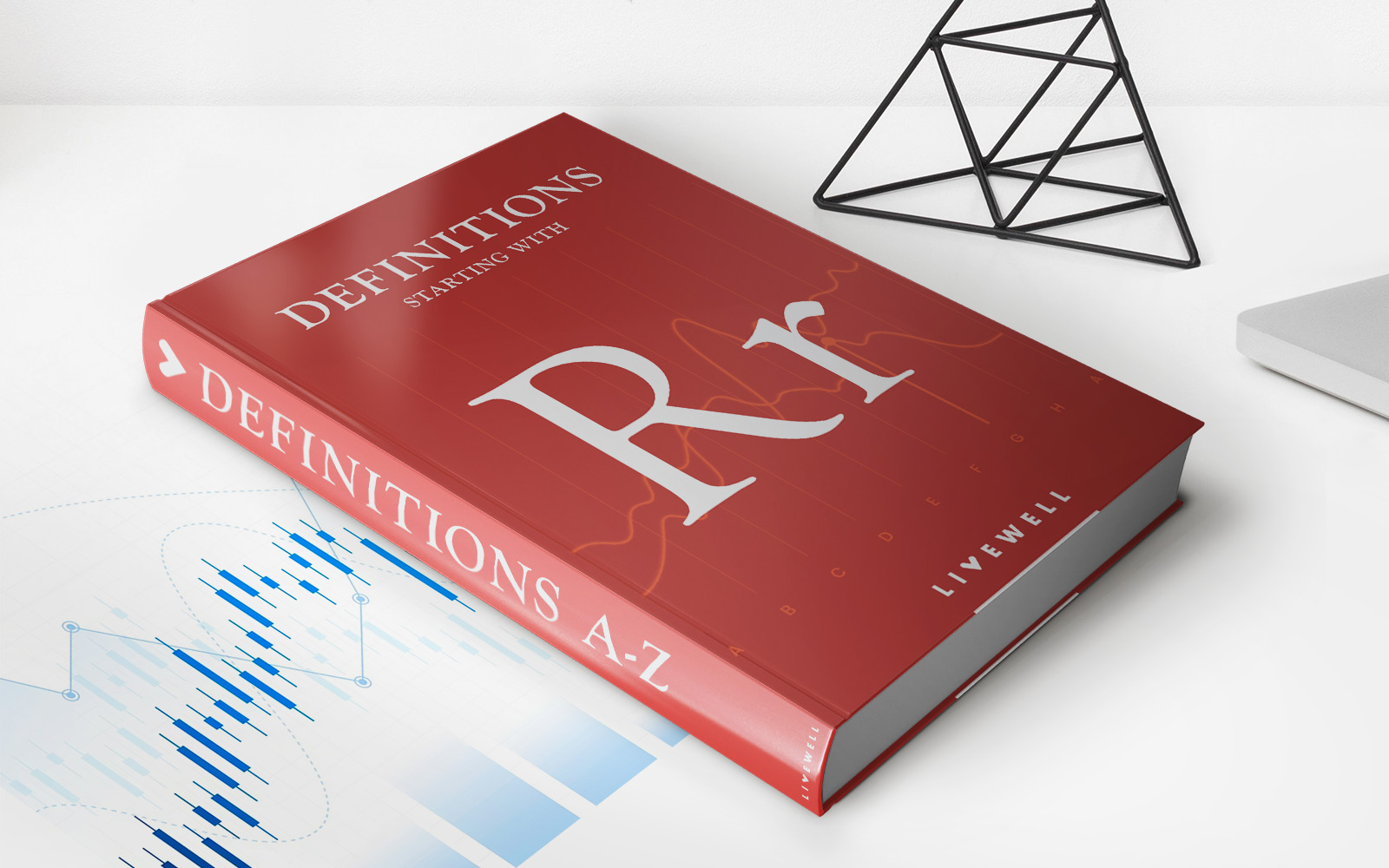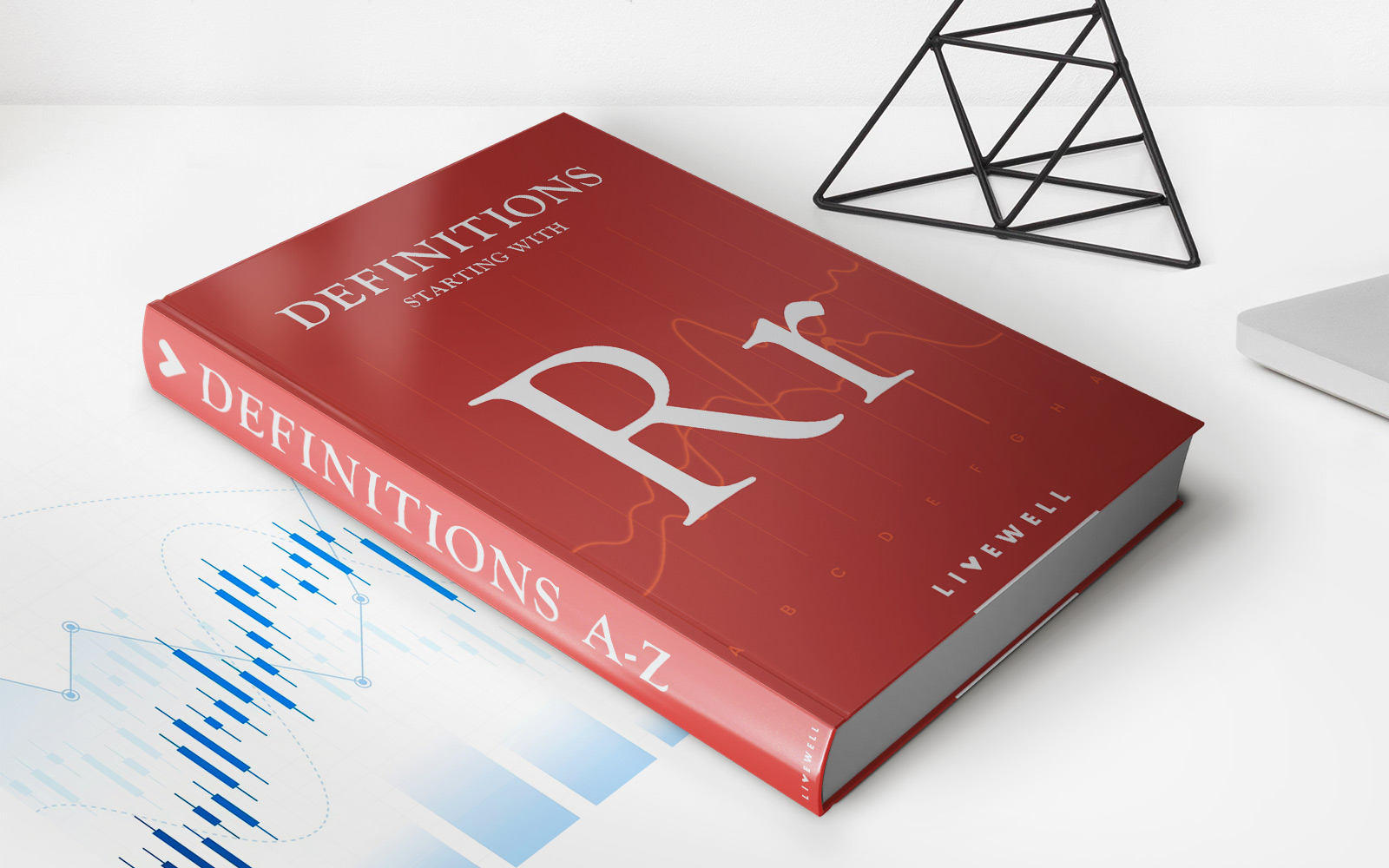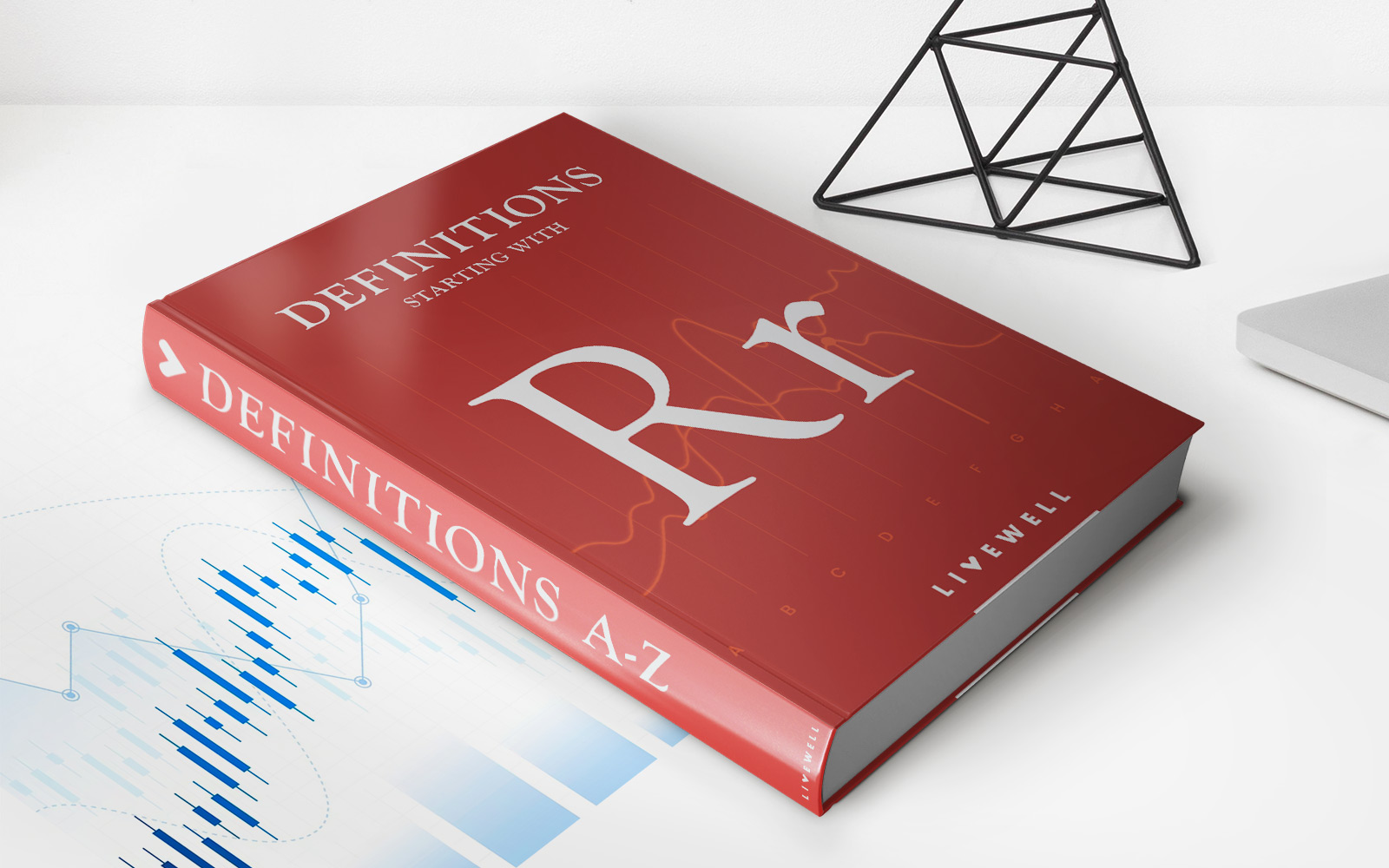

Finance
What Is Credit Research
Published: January 8, 2024
Learn about credit research and how it relates to finance. Understand the importance of credit analysis in assessing financial risks and making informed investment decisions.
(Many of the links in this article redirect to a specific reviewed product. Your purchase of these products through affiliate links helps to generate commission for LiveWell, at no extra cost. Learn more)
Table of Contents
Introduction
Welcome to the world of credit research, an essential component of the finance industry that plays a crucial role in decision making for lenders and investors alike. Credit research is a fundamental process that involves analyzing the creditworthiness of borrowers and assessing the potential risks and rewards associated with lending or investing in them.
As the saying goes, “knowledge is power,” and in the world of finance, credit research provides the necessary knowledge to make informed decisions. Whether it’s a bank evaluating a loan application, an investor deciding on a bond investment, or a credit rating agency assigning a credit rating, credit research serves as the backbone of these assessments.
The primary objective of credit research is to evaluate the creditworthiness of borrowers by examining their financial statements, industry dynamics, market trends, and qualitative factors. By assessing the creditworthiness, credit research helps lenders and investors gauge the likelihood of the borrower’s ability to meet their financial obligations.
This article will delve deeper into the intricacies of credit research, exploring its importance, key elements involved, the process, and the role it plays in investment decision-making. Additionally, we will discuss the challenges faced in credit research and the techniques and tools used to overcome them.
By gaining a comprehensive understanding of credit research, you will not only be equipped with the knowledge to make informed financial decisions but also be able to navigate the complex world of credit risk with confidence.
Definition of Credit Research
Credit research, also known as credit analysis, is the systematic process of evaluating the creditworthiness and financial stability of individuals, corporations, or other entities. It involves conducting in-depth research and analysis of various factors to assess the ability of the borrower to repay their debts or fulfill their financial obligations.
At its core, credit research aims to provide insights into the credit risk associated with lending or investing in a particular entity. The credit analyst examines a wide range of information, including financial statements, industry trends, market conditions, and other qualitative factors, to determine the creditworthiness of the borrower.
By assessing the creditworthiness of borrowers, credit research helps financial institutions, investors, and credit rating agencies make informed decisions regarding loan approvals, bond investments, and credit ratings respectively. It provides a comprehensive evaluation of the borrower’s financial health, which includes their ability to generate consistent cash flows, manage their liabilities, and handle market risks.
Credit research typically involves analyzing various financial documents, such as income statements, balance sheets, cash flow statements, and other relevant data to understand the borrower’s financial position. It also considers qualitative factors, such as the borrower’s management team, market competition, industry outlook, and regulatory environment, to get a holistic view of the borrower’s creditworthiness.
The ultimate goal of credit research is to assess the probability and magnitude of potential credit losses. This assessment assists lenders and investors in determining the interest rates, loan terms, investment decisions, and risk mitigation strategies.
With the ever-changing financial landscape, credit research has become even more crucial in today’s economy. It helps lenders and investors navigate through market volatilities, identify emerging risks, and make informed decisions to safeguard their financial interests.
In the next sections, we will explore the importance of credit research and how it plays a pivotal role in investment decision-making.
Importance of Credit Research
Credit research holds immense importance in the world of finance as it enables lenders and investors to make informed decisions regarding credit risk. Here are some key reasons why credit research is essential:
- Risk Assessment: Credit research helps in assessing the creditworthiness and financial stability of borrowers. By analyzing financial statements, industry dynamics, and market trends, credit analysts can evaluate the risk associated with lending or investing in a particular entity. This information is crucial for lenders and investors to determine the probability of default and potential losses.
- Decision Making: Credit research provides the necessary insights for lenders and investors to make sound decisions. It helps banks determine whether to approve a loan application and at what interest rate. Likewise, credit research assists investors in deciding whether to invest in a particular bond or debt instrument. This information empowers decision-makers to allocate resources wisely and minimize potential losses.
- Portfolio Management: For financial institutions and investors with a portfolio of loans or investments, credit research plays a vital role in managing risk. It helps in diversifying the portfolio by assessing the credit risk of different borrowers or issuers. By analyzing credit profiles and assigning credit ratings, lenders and investors can optimize their portfolio to achieve a balance between risk and reward.
- Compliance and Regulation: Credit research is crucial for ensuring compliance with regulatory requirements. Financial institutions need to assess the creditworthiness of borrowers to comply with regulations such as Basel III and Dodd-Frank Act. Credit research provides the necessary data and analysis to meet these compliance standards and mitigate regulatory risks.
- Market Confidence: Credit research enhances market confidence by providing transparency and credibility. Credit ratings assigned by credit rating agencies, which are based on credit research, serve as a benchmark for investors and lenders. These ratings instill confidence in the market, enabling borrowers to access capital and investors to make informed investment decisions.
The importance of credit research cannot be understated, as it forms the basis for managing credit risk, making informed decisions, and maintaining the stability and efficiency of the financial system. It is a vital tool for lenders, investors, and regulators in assessing the creditworthiness of borrowers and safeguarding financial interests.
Elements of Credit Research
Credit research involves the analysis of various elements to evaluate the creditworthiness and financial stability of borrowers. These elements provide a comprehensive picture of the borrower’s ability to fulfill their financial obligations. Here are the key elements of credit research:
- Financial Statements: The analysis of financial statements, including income statements, balance sheets, and cash flow statements, is a fundamental element of credit research. It provides insights into the borrower’s revenue generation, profitability, liquidity, and debt servicing capabilities. By examining these statements, credit analysts can assess the borrower’s financial health and identify any red flags or risks.
- Industry Analysis: Understanding the industry in which the borrower operates is crucial for credit research. Industry analysis involves examining industry trends, competitive dynamics, regulatory environment, and key risk factors that may impact the borrower’s creditworthiness. By analyzing the industry landscape, credit analysts can evaluate the borrower’s position in the market and assess any industry-specific risks that may affect their ability to repay debts.
- Management Evaluation: The evaluation of the borrower’s management team is an essential element of credit research. Assessing the experience, track record, and expertise of the management team provides insights into the borrower’s ability to navigate challenges, make strategic decisions, and adapt to changing market conditions. It helps credit analysts evaluate the borrower’s ability to execute their business plans and manage financial risks effectively.
- Market Conditions: Credit research involves analyzing the broader market conditions and economic factors that may impact the borrower’s creditworthiness. Factors such as interest rates, inflation, GDP growth rates, and market volatility can have a significant impact on a borrower’s ability to meet financial obligations. By considering these factors, credit analysts can assess the borrower’s resilience in different market scenarios and anticipate potential risks.
- Qualitative Factors: Credit research also incorporates qualitative factors, such as the borrower’s reputation, corporate governance practices, legal and regulatory compliance, and environmental, social, and governance (ESG) factors. These factors provide insights into the borrower’s ethical practices, risk management practices, and overall sustainability. Credit analysts evaluate these qualitative factors to determine the borrower’s reliability and long-term viability.
By analyzing these key elements, credit research provides a holistic assessment of the borrower’s creditworthiness. It allows lenders and investors to evaluate the risk associated with extending credit or making investments, enabling them to make informed decisions and mitigate potential losses.
Process of Credit Research
The process of credit research involves a systematic and thorough examination of various factors to assess the creditworthiness and financial stability of borrowers. Here are the key steps involved in the process of credit research:
- Gathering Data: The first step in the credit research process is gathering relevant information about the borrower. This includes collecting financial statements, industry reports, market data, regulatory filings, and any other pertinent documents that provide insights into the borrower’s financial position and creditworthiness.
- Financial Analysis: Once the data is collected, credit analysts analyze the borrower’s financial statements to understand their revenue generation, profitability, liquidity, and debt servicing capabilities. This involves evaluating key financial ratios, such as debt-to-equity ratio, current ratio, and interest coverage ratio, to assess the borrower’s financial health and ability to meet their financial obligations.
- Industry Analysis: Next, credit analysts conduct a comprehensive analysis of the industry in which the borrower operates. This involves assessing industry trends, competitive dynamics, regulatory environment, and key risk factors that may impact the borrower’s creditworthiness. Industry analysis helps credit analysts understand the specific challenges and opportunities faced by the borrower within their sector.
- Management Evaluation: The evaluation of the borrower’s management team is an essential component of credit research. Credit analysts assess the experience, track record, and expertise of the management team to evaluate their ability to lead the organization and make effective strategic decisions. This assessment helps gauge the borrower’s ability to adapt to market changes, manage risks, and execute their business plans.
- Risk Assessment: In this step, credit analysts assess the credit risk associated with lending or investing in the borrower. This involves identifying and quantifying various risks, such as default risk, market risk, liquidity risk, and operational risk. By evaluating the probability and impact of these risks, credit analysts determine the overall credit risk profile of the borrower.
- Rating Assignment: Once the credit risk assessment is complete, credit analysts assign a credit rating to the borrower. Credit ratings serve as an indicator of the borrower’s creditworthiness and their ability to repay debts. These ratings provide a standardized measure for lenders and investors to assess the risk associated with the borrower’s financial obligations.
- Monitoring and Review: Credit research is an ongoing process that includes monitoring the borrower’s performance and reviewing their credit profile over time. Credit analysts regularly assess any changes in the borrower’s financial health, industry dynamics, and other factors that may impact their creditworthiness. This monitoring helps lenders and investors stay updated on potential risks and take appropriate actions if needed.
The process of credit research requires attention to detail, analytical skills, and a deep understanding of financial analysis and risk assessment. By following a systematic approach, credit analysts can provide valuable insights to lenders and investors, enabling them to make informed decisions and manage credit risk effectively.
Role of Credit Research in Investment Decision Making
Credit research plays a crucial role in investment decision making, providing valuable insights that help lenders and investors assess the creditworthiness and potential risks associated with borrowing or investing in a particular entity. Here are the key ways in which credit research influences investment decision making:
- Evaluating Risk-Reward Tradeoff: Credit research allows investors to assess the risk-reward tradeoff associated with an investment. By analyzing the creditworthiness of a borrower, investors can gauge the likelihood of receiving timely interest payments and the return of principal. This information helps investors make informed decisions about the level of risk they are willing to take on and determine the appropriate return expectation for their investment.
- Optimizing Portfolio Allocation: Credit research provides insights into the credit risk profile of different borrowers or issuers, enabling investors to optimize their portfolio allocation. By assessing the creditworthiness of various investment options, investors can diversify their portfolio and allocate their resources based on risk tolerance and return objectives. This helps in reducing the overall portfolio risk and enhancing potential returns.
- Identifying Investment Opportunities: Credit research helps investors identify investment opportunities by evaluating the creditworthiness of borrowers. By analyzing financial statements, market conditions, and industry trends, credit research highlights potential investment avenues that align with the investor’s risk appetite and return objectives. This enables investors to make informed decisions about which issuers or borrowers to invest in.
- Mitigating Credit Risk: Credit research assists lenders and investors in mitigating credit risk. By assessing the creditworthiness of borrowers, lenders can make informed decisions about loan approvals, interest rates, and loan terms to mitigate the risk of default. Likewise, investors can evaluate the credit risk associated with different debt securities or bonds and adjust their investment strategies accordingly.
- Enhancing Due Diligence: Credit research provides a thorough evaluation of the borrower’s financial health, industry dynamics, and risk factors. This enables lenders and investors to conduct comprehensive due diligence before entering into a lending or investment agreement. By gaining a deeper understanding of the borrower’s creditworthiness, investors can identify any potential red flags or risks that may impact their investment decision.
- Meeting Regulatory Requirements: Credit research is essential for financial institutions to comply with regulatory standards. Regulatory bodies often require financial institutions to assess the creditworthiness of borrowers based on sound credit research practices. By conducting comprehensive credit research, financial institutions can meet regulatory requirements and mitigate the risk of non-compliance.
Overall, credit research plays a critical role in investment decision making, helping lenders and investors assess credit risk, identify investment opportunities, optimize portfolio allocation, and ensure compliance with regulations. By using credit research as a foundation for decision making, investors can make informed choices that align with their risk appetite and investment objectives.
Challenges in Credit Research
Credit research is a complex and dynamic process that comes with its fair share of challenges. Here are some key challenges faced by credit researchers:
- Data Availability and Quality: Accessing accurate and reliable data can be a significant challenge in credit research. Financial statements, industry data, and other relevant information may not always be readily available or may lack transparency. Additionally, the reliability and accuracy of the data can vary, making it crucial for credit researchers to verify and validate the information before making informed decisions.
- Complex Financial Structures: Many borrowers have complex financial structures, with multiple subsidiaries, off-balance sheet items, and complex debt obligations. This complexity adds complexity to the credit research process, as credit researchers need to assess the overall financial health of the borrower, including any potential hidden risks or contingent liabilities associated with these structures.
- Subjectivity and Judgement: Credit research involves making subjective judgments based on available information and analysis. Credit analysts interpret financial data, assess qualitative factors, and assign credit ratings or recommendations based on their professional judgment. However, different analysts may have varying opinions, leading to subjective assessments of creditworthiness and potential biases.
- Unforeseen Events and Market Volatility: Credit risk can be greatly influenced by unforeseen events and market volatility. Economic downturns, changes in regulations, technological disruptions, or natural disasters can impact the creditworthiness of borrowers. Credit researchers need to stay vigilant and continuously monitor market conditions to assess the potential impact of these events on the borrower’s creditworthiness.
- Limited Historical Data: For new or emerging companies, limited historical financial data can pose a challenge for credit researchers. A lack of historical performance makes it difficult to assess the borrower’s track record and may increase uncertainty regarding future prospects. In such cases, credit researchers may need to rely on alternative data sources or industry benchmarks to make informed judgments.
- Time Constraints: Credit research often operates under time constraints due to various factors such as deadlines for loan approvals or investment decisions. Limited time frames can affect the depth and comprehensiveness of the research, potentially leading to incomplete or rushed analyses. Credit researchers must balance the need for timely decision-making with thorough analysis to mitigate the risk of overlooking critical information.
Despite these challenges, credit researchers strive to overcome them by leveraging their expertise, adopting rigorous methodologies, and utilizing advanced data analysis tools. By continuously staying updated on industry trends, refining analytical skills, and embracing technological advancements, credit researchers can navigate through these challenges and provide valuable insights for informed credit risk management.
Techniques and Tools Used in Credit Research
Credit research relies on a combination of techniques and tools to analyze creditworthiness and assess the associated risks. These techniques and tools enhance the efficiency and accuracy of the research process. Here are some commonly used techniques and tools in credit research:
- Financial Ratio Analysis: Financial ratio analysis is a fundamental technique in credit research. By calculating and analyzing key financial ratios, such as liquidity ratios, profitability ratios, and leverage ratios, credit researchers can assess the borrower’s financial health and performance. This analysis provides insights into the borrower’s ability to generate cash flows, manage debt, and meet financial obligations.
- Credit Scoring Models: Credit scoring models use statistical models and algorithms to quantify the credit risk associated with a borrower. These models assign a numerical credit score based on various factors, such as financial history, credit utilization, payment history, and other relevant data. Credit scoring models provide a standardized and objective measure of creditworthiness, facilitating quick and consistent decision-making.
- Industry and Market Analysis: Industry and market analysis is a crucial element of credit research. By studying industry trends, competitive dynamics, and market conditions, credit researchers can evaluate the borrower’s position in the market and assess any potential risks or opportunities. This analysis helps in understanding the industry’s impact on the borrower’s creditworthiness and facilitates informed investment decisions.
- Scenario Analysis: Scenario analysis involves evaluating the impact of different hypothetical scenarios on the borrower’s creditworthiness. Credit researchers consider various events, such as economic downturns, industry disruptions, or regulatory changes, and assess the borrower’s resilience in these situations. Scenario analysis helps in understanding the potential risks and vulnerabilities and aids in stress testing the borrower’s financial position.
- Credit Rating Agencies: Credit rating agencies play a significant role in credit research by providing credit ratings and analysis of borrowers. Credit researchers often consider the ratings assigned by reputable credit rating agencies as a reference point to assess credit risk. These ratings provide a benchmark for evaluating the creditworthiness of borrowers and help in making informed investment decisions.
- Technology and Data Analytics: The advancements in technology and data analytics have significantly influenced credit research. Credit researchers use sophisticated tools and software to collect, organize, and analyze large volumes of data. Data visualization tools and machine learning algorithms enable credit researchers to identify patterns, trends, and correlations, enhancing the accuracy and efficiency of credit research.
These techniques and tools, along with the expertise and experience of credit researchers, form the foundation for sound credit analysis. By combining quantitative analysis, industry knowledge, and advanced technology, credit researchers can provide valuable insights to lenders and investors, aiding in effective decision-making and risk management.
Conclusion
Credit research plays a vital role in the finance industry, providing the necessary insights for lenders and investors to assess creditworthiness and make informed decisions. By evaluating the financial health, industry dynamics, and qualitative factors, credit researchers help mitigate credit risk, optimize portfolio allocation, and enhance investment decision-making.
Throughout the credit research process, various elements, such as financial statements, industry analysis, management assessment, and market conditions, are analyzed to assess creditworthiness and potential risks. This process involves gathering and analyzing data, evaluating risk-reward tradeoffs, assigning credit ratings, and continuously monitoring the borrower’s performance.
Despite challenges such as data availability, complex financial structures, subjective judgment, and market volatility, credit researchers rely on techniques and tools such as financial ratio analysis, credit scoring models, industry and market analysis, scenario analysis, credit rating agencies, and advanced technology to enhance the efficiency and accuracy of their research.
By incorporating credit research into investment decision-making, lenders and investors can assess credit risk, identify investment opportunities, and optimize portfolio allocation. Credit research helps in making informed decisions, meeting regulatory requirements, and enhancing market confidence.
In conclusion, credit research is a dynamic and critical process that enables lenders and investors to navigate the complex terrain of credit risk. By leveraging techniques, tools, and expertise, credit researchers contribute to the stability and efficiency of the financial system, ensuring sound decision-making and risk mitigation.














